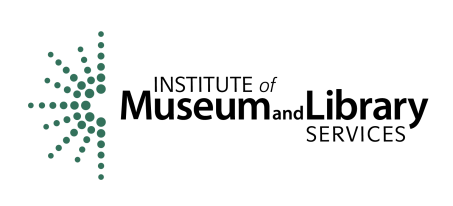Digital Navigator Profile: Angel Sanchez
Q&A with Angel Sanchez, Salt Lake City Public Library Digital Navigator

Now being piloted by Salt Lake City Public Library and the National Digital Inclusion Alliance, the Digital Navigators service model positions trained individuals to provide phone-based support for issues related to the full spectrum of digital needs.
ULC is connecting with Digital Navigators for one-on-one discussions of their work on the forefront of this exciting new initiative. Read the sixth interview in this series below, featuring Angel Sanchez.

Q&A with: Angel Sanchez
Digital Navigator and Business Specialist, Suazo Business Center, Utah
Angel is a first-generation college student who is from Utah, but his roots come from El Salvador. He is currently a senior at the University of Utah, majoring in operations and supply chain and minoring in entrepreneurship. One of the many goals Angel has is to support his parents financially so they can quit their blue-collar jobs. He also wants to pursue game operations to potentially work for the NBA. He is very passionate about helping the Latino/Hispanic community and is grateful to work at the Suazo Business Center where he can help empower his community. His responsibilities at Suazo include helping the community of business owners apply to COVID relief grants and loans. Additionally, he is developing front desk procedures along with other company processes.
Why is this work especially critical right now?
This program is extremely important for our community because it increases access to computers and bridges the educational gap with technology. It is especially important for our ethnic minority communities, who often fall behind with technology due to language barriers, lack of access and education. As Salt Lake City is growing rapidly and slowly becoming another Silicon Valley (the "Silicon Slopes"), it is imperative that we help our people stay up to speed with technology. The Digital Navigators program helps provide the resources to make that possible.
How has this work changed your perception of the role of libraries in meeting digital needs?
Joining the Digital Navigators program illuminated to me the digital gaps we have in our community. It is very easy to overlook these issues when you have access to technology every day. I quickly recognized the dire need our community had when it came to not only access to technology, but also digital literacy. I now recognize that having access to technology is a huge privilege, let alone knowing how to use it. My perception on the library has completely changed since working with our community. It has been a pleasure being able to utilize the library's resources to assist our people.
How do you explain your daily work as a Digital Navigator in your own words?
My role consisted of speaking to current and prospective Suazo Business clients who sought technical assistance or a device. To further expand, I would meet with the client to understand their needs and set up digital literacy goals to ensure we were working towards their vision of progress. After that, I would either provide them with educational resources or a device. Lastly, I would conduct an exit and follow-up survey to track their progress towards their goal.
Can you share an example of feedback or an experience from this work that has been meaningful to you?
One impactful story involved our client, Maria Castillo, who needed technical support for her small taco truck business. She came to me in early April expressing interest in a computer so she could begin utilizing it for emails, applying to farmer markets and marketing her business on social media. Initially, she did not know how to navigate a computer and she became frustrated. I told her, “This learning curve is a marathon not a race. With consistent practice you will get better and more comfortable.” After working with her and directing her to learning resources, she learned rapidly how to navigate a computer and was able to apply to several farmer markets, confidently use email messaging and register her kids for school. She has come a long way and I am pleased to have been a part of her progress.
What tips do you have for other Digital Navigators or library systems who are just getting started with this work?
The biggest resource for me was the weekly meetings we had with other Digital Navigators. Every Wednesday, we would collaborate on best practices, discuss concerns and go over resource procedures. As a new Digital Navigator, I also found it extremely helpful to have a Service Walkthrough guide document to get up to speed with how to assist our clients. This document includes a variety of resources that Digital Navigators can utilize when working with clients.
About the Digital Navigators Project
In partnership with the Salt Lake City Public Library and National Digital Inclusion Alliance, ULC is advancing a new Digital Navigators service model to help libraries address the new and intensified digital access barriers resulting from COVID-19. Now being piloted by SLCPL and NDIA through September 2021, the Digital Navigators model offers a replicable blueprint for meeting the digital needs of underserved community members via phone-based support services.
This project was made possible in part by the Institute of Museum and Library Services grant number LG-248566-OLS-20.

Learn More >
Related Articles
Digital Navigator Profile: Esmeralda Avalos
Salt Lake City Public Library
ULC connected with Salt Lake City Digital Navigator Esmeralda Avalos to learn more about her role helping to engage and assist community members with overcoming digital barriers.
Learn More
Digital Navigator Profile: Amanda Perry
Salt Lake City Public Library
ULC connected with Amanda Perry, associate librarian at Salt Lake City Public Library, to learn more about her role as a Digital Navigator helping to engage and assist community members with digital barriers.
